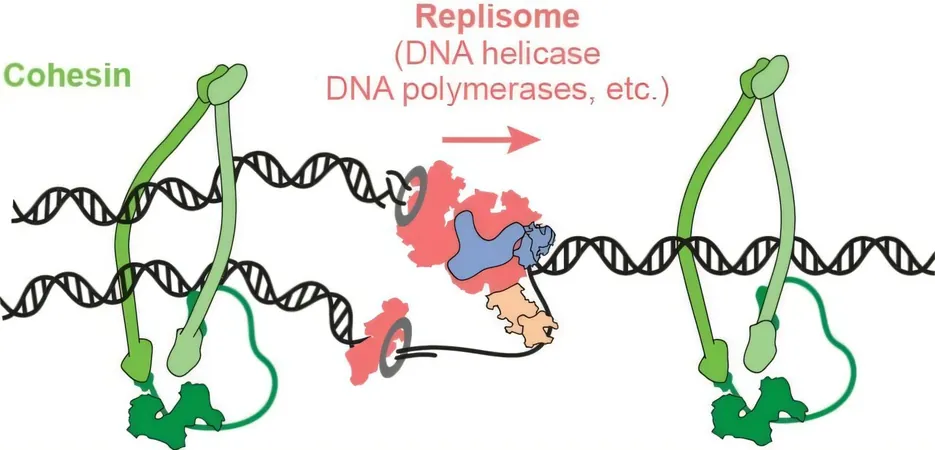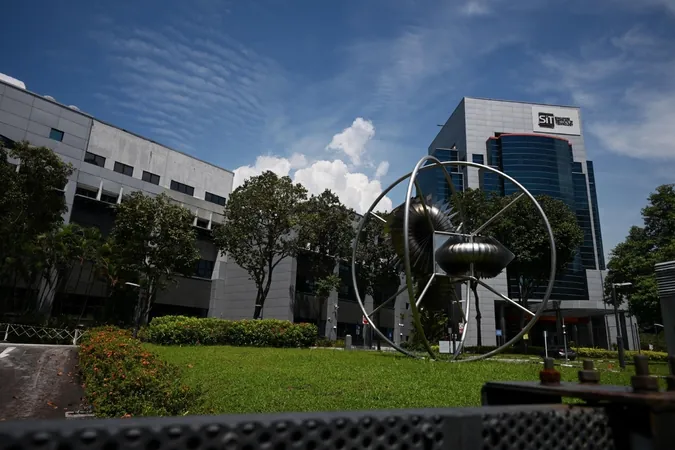
Unlocking DNA's Secrets: The Surprising Dance of Replication and Cohesion
2025-09-16
Author: Siti
DNA Replication: The Fundamental Process of Life
As cells prepare to divide, DNA replication kicks in to ensure each daughter cell receives identical genetic material. The resulting copies, known as "sister chromatids," are bound together by a unique protein complex called cohesin, which acts like a ring holding them in a delicate balance until they are drawn apart—a fascinating biological tug-of-war.
The Mystery of Cohesin and Replication
Although cohesin has been known for nearly three decades, scientists have long debated how the DNA replication machinery navigates around this protein complex. Leaders in the field, John Diffley and Frank Uhlmann, took on this challenge in a groundbreaking collaboration, publishing their findings in prestigious journals.
A Fortuitous Collaboration
Diffley, focused on the intricacies of the DNA copying machinery, and Uhlmann, who was delving into cohesin's role in DNA organization, found their paths intersecting at the perfect moment. Their combined efforts brought about new insights into how these two critical processes interact.
Experimenting with DNA: The Role of Cohesin
Samson Glaser, a Ph.D. researcher straddling both labs, took the lead in simulating the interactions between cohesin and the replisome, the complex responsible for DNA replication. Using a method called "biological reconstitution," he mixed components of the replication process in a test tube and tracked their interactions.
To his astonishment, Glaser observed the replisome passing through the cohesin ring, suggesting this complex is more flexible than previously believed—a true twist in our understanding of DNA replication.
Unexpected Discoveries
The most surprising finding? As more components of the replisome were added, the efficiency of passing through the cohesin rings improved, challenging assumptions about how size impacts movement. Key to this process were DNA polymerases, the enzymes that synthesize new DNA; their presence was essential for smooth passage.
The Complex Reality of Chromatid Cohesion
However, not every replication run is smooth sailing. Researcher Masashi Minamino revealed that cohesin doesn’t always embrace both sister chromatids after they replicate. Sometimes, it only binds to one, suggesting the ring may rupture during interaction with the replisome.
Intriguingly, when this happens, a structure known as the 'cohesin loader' steps in, aiding the second chromatid in joining the first, sometimes requiring additional cohesin molecules to ensure proper cohesion.
The Endless Journey of Discovery
This deep dive into DNA replication has uncovered new questions and pathways for future research. Both Diffley and Uhlmann are eager to further explore the roles of DNA polymerases in these processes and examine how these discoveries apply to biological systems as a whole.
Their groundbreaking work underscores the immense power of collaboration in science, revealing that understanding the complex dance between DNA replication and cohesin is only the beginning of unraveling the mysteries of life itself.





 Brasil (PT)
Brasil (PT)
 Canada (EN)
Canada (EN)
 Chile (ES)
Chile (ES)
 Česko (CS)
Česko (CS)
 대한민국 (KO)
대한민국 (KO)
 España (ES)
España (ES)
 France (FR)
France (FR)
 Hong Kong (EN)
Hong Kong (EN)
 Italia (IT)
Italia (IT)
 日本 (JA)
日本 (JA)
 Magyarország (HU)
Magyarország (HU)
 Norge (NO)
Norge (NO)
 Polska (PL)
Polska (PL)
 Schweiz (DE)
Schweiz (DE)
 Singapore (EN)
Singapore (EN)
 Sverige (SV)
Sverige (SV)
 Suomi (FI)
Suomi (FI)
 Türkiye (TR)
Türkiye (TR)
 الإمارات العربية المتحدة (AR)
الإمارات العربية المتحدة (AR)